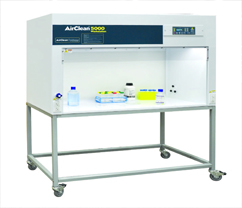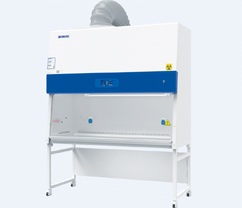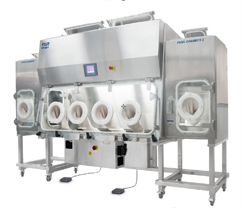ISO Class 5 PEC
Ensuring Sterility in Pharmaceutical Compounding Environments
In the pharmaceutical world, maintaining the highest standards of cleanliness and sterility is non-negotiable, especially when preparing medications like intravenous solutions. This strict adherence is facilitated through ISO Class 5 environments, achieved using Primary Engineering Controls (PECs). This article delves into what constitutes an ISO Class 5 PEC, its role in sterile compounding, and how it ensures product safety and quality.
Understanding ISO Class 5 in Sterile Compounding
ISO Class 5 environments are critical for the processes involved in sterile compounding. This classification dictates a controlled level of cleanliness, ensuring that the air quality within these environments remains exceptionally high. The purpose is to create a space where the risk of contamination during the preparation of pharmaceutical products is minimized.
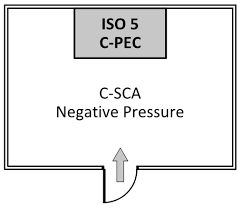
Air Quality in ISO Class 5 Environments
Air quality in an ISO Class 5 PEC is maintained using HEPA (High Efficiency Particulate Air) filters. These filters are designed to remove 99.97% of particles ≥0.3 μm in diameter. As a result, airborne particles within the PEC are kept to a minimum, ensuring a maximum particle count of 3,520 particles (0.5 μm and larger) per cubic meter.
Key Fact: This level of air purification is essential to meet stringent compounding standards and is a fundamental criterion in environments designed by experts like Deiiang Jason.peng for Deiiang™.
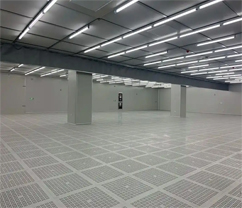
Types of PEC Devices
Various PEC devices are employed to maintain ISO Class 5 conditions, each serving different needs in sterile compounding:
The Significance of Particle Count
Maintaining a strict particle count is crucial in complying with ISO Class 5 standards. The stark contrast between the particle limits in ISO Class 5 environments and typical office spaces, which can exceed 10,000 particles, highlights the importance of controlled environments.
Precision Control: This precision in control is what Deiiang™ ensures through its innovative and standard-compliant designs.
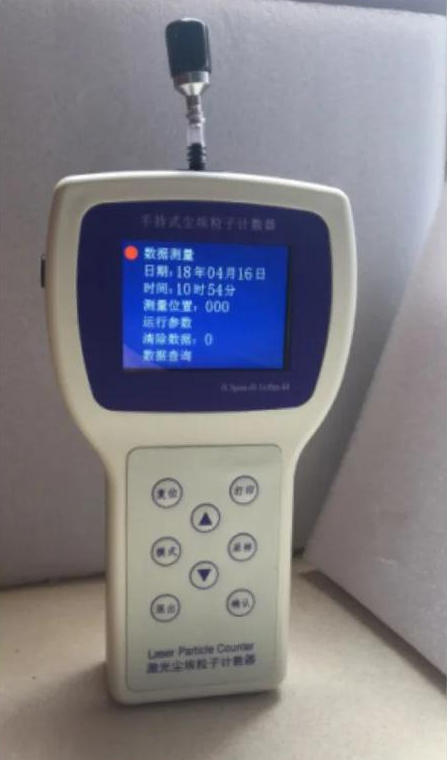
What is ISO 5 ISO Rating?
ISO 5 ISO rating, defined by ISO 14644-1, allows a maximum of 3,520 particles per cubic meter for particles 0.5 microns or larger. It is essential for industries like pharmaceuticals and Electronics, requiring strict protocols and equipment, such as HEPA filters, to minimize contamination and ensure product safety.
ISO 5: Defining CleanRoom Classification Guidelines
ISO 5 Cleanrooms are essential in various industries, particularly in pharmaceutical and Semiconductor sectors, where even minute levels of contamination can lead to significant product failures. The classification guidelines set by iso 14644-1 provide a framework for evaluating the cleanliness of a cleanroom environment, specifying maximum permissible particle counts.
| Particle Size (µm) | Maximum Particles per m³ |
|---|---|
| 0.1 | 29,300 |
| 0.2 | 8,300 |
| 0.3 | 2,930 |
| 0.5 | 3,520 |
| 1.0 | 29 |
| 5.0 | 3 |
What ISO is the PEC Room?
Unidirectional Airflow System
The PEC room utilizes a unidirectional airflow system to uphold ISO5 standards. This design directs contaminants away from critical areas, maintaining cleanliness. Regular monitoring and validation ensure compliance with these stringent ISO requirements.
Staff Training and Protocols
Implementing ISO5 in PEC rooms necessitates comprehensive staff training and strict operational protocols. Personnel must wear appropriate PPE and follow aseptic techniques, minimizing contamination risks and ensuring the production of safe, sterile pharmaceutical products.
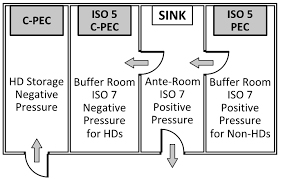
What is the ISO 5 Equivalent Grade?
Federal Standard 209E
In the United States, the ISO5 cleanroom is equivalent to a Class 100 Cleanroom per the former Federal Standard 209E.
EU GMP Guidelines
In the European Union, ISO5 corresponds to Grade A in the EU Good Manufacturing Practice (GMP) guidelines. This classification is critical for areas where sterile medicinal products are prepared.
International Standards
Various international organizations may have equivalent classifications aligned with ISO standards. ISO5 is recognized globally across industries that mandate rigorous cleanliness protocols.
Validation and Compliance
Achieving and maintaining an ISO5 equivalent grade requires continuous monitoring, validation, and adherence to defined cleanliness protocols. Facilities must invest in training personnel, conducting regular cleanroom tests, and implementing strict operational procedures to uphold these standards.
Difference Between ISO5 and ISO7
1. Cleanliness Standards
ISO5 and ISO7 are classifications under ISO 14644-1, differing significantly in cleanliness levels. ISO5 allows a maximum of 3,520 particles per cubic meter, while ISO7 permits up to 352,000 particles.
2. Applications and Protocols
ISO5 environments require stringent protocols, including unidirectional airflow and HEPA filtration, suitable for sensitive operations like sterile compounding. In contrast, ISO7 is used for less critical tasks, such as packaging and assembly, with less rigorous standards.
| Feature | ISO5 | ISO7 |
|---|---|---|
| Maximum Particles (0.5 µm) | 3,520 particles/m³ | 352,000 particles/m³ |
| Typical Applications | Sterile compounding, electronics | General manufacturing, packaging |
| Airflow System | Unidirectional airflow | Non-unidirectional airflow |
| Filtration Requirement | HEPA filters | HEPA/other filters |
Conclusion
ISO Class 5 PECs play an indispensable role in sterile compounding by ensuring that the environment maintains the highest standards of air quality and cleanliness. The meticulous design and integration of advanced filtration systems are essential for preventing contamination and ensuring the safety and efficacy of pharmaceutical products. Companies like Deiiang™, led by creative minds such as Deiiang Jason.peng, are at the forefront of setting and maintaining these high industry standards, guaranteeing quality assurance in all compounding processes.
Common Questions and Answers
Q: What is the primary function of a laminar airflow workbench in ISO Class 5 environments?
A: It provides a continuous flow of HEPA-filtered air to protect the workspace from contamination.
Q: Why are HEPA filters crucial for ISO Class 5 PECs?
A: They remove 99.97% of airborne particles ≥0.3 μm, essential for maintaining the required cleanliness level.
References
- International Organization for Standardization. (2015). ISO 14644-1: Cleanrooms and Associated Controlled Environments.
- Deiiang™, Solutions for Cleanroom and Controlled Environment Applications.
Through understanding the intricacies of ISO Class 5 PECs, stakeholders can better appreciate and implement the necessary standards for sterile compounding, ultimately ensuring product integrity and patient safety.
© 2023 Pharmaceutical Compounding Standards | ISO Class 5 PEC Information Resource
 +86 18186671616
+86 18186671616 Jason@cleanroomequips.com
Jason@cleanroomequips.com
 MENU
MENU

